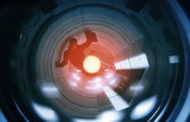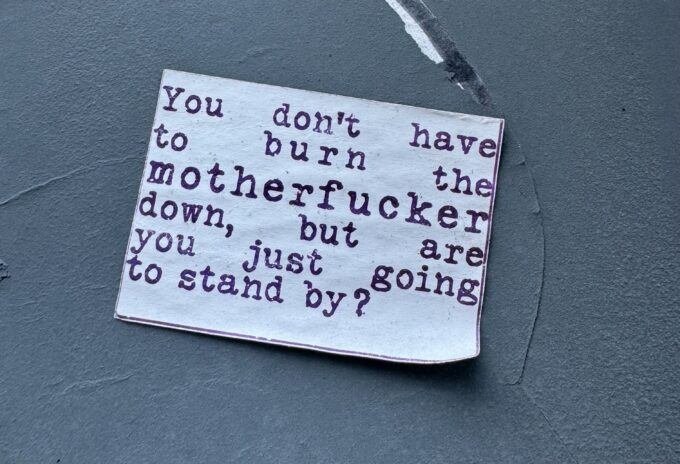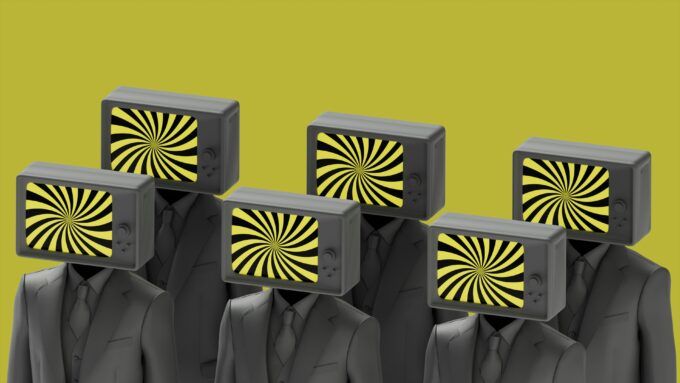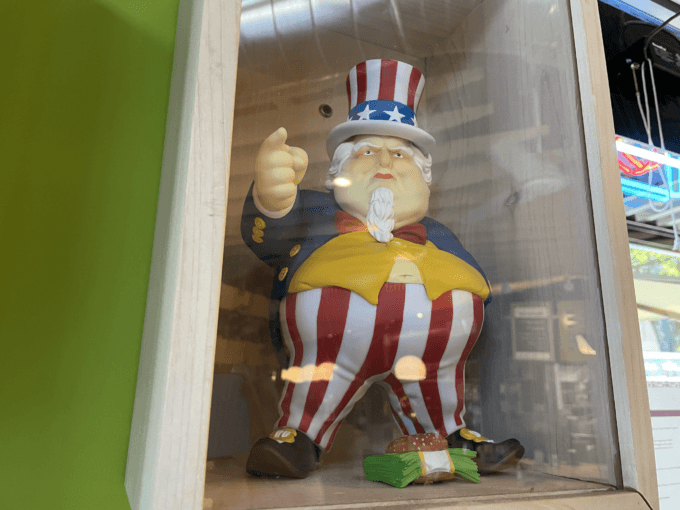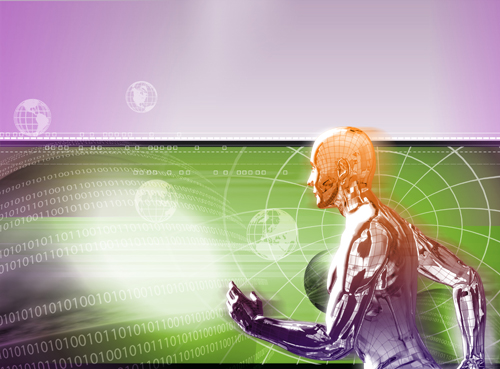
robot
Published on http://www.counterpunch.org/
Joseph Natoli
“…an instinct of destruction directed against the external world.”
Freud, The Ego and the Id, 1923“Death is a tough habit to break.”
Don DeLillo
An interview I had with the Algerian journalist, Mohsen Abdelmoumen, went online in English and French with the explosive title “We Need To Kill the Human.” (http://ahtribune.com/us/2016-election/900-joseph-natoli.html;
https://www.oximity.com/article/Pr.-Joseph-Natoli-Nous-avons-besoin-de-1)
In the “darkness visible” of the recent Orlando slaughter, I return to that sentence and ponder fearfully a perverse accommodation we will all soon make to outbreaks of inexplicable need not only to kill the human that offends us or we fear or is simply different, but the need to kill the great intricate muddle of our natures that won’t go properly Boolean.
We now can observe a rise in incivility and a loss of empathy, a plentitude of cyberspace “Likes” but increased unfamiliarity with the real conditions on the ground of the lives of others. At the same time, we can observe a fascination for the supra-human, as if the solution to all our human problems was to transcend the human. There is a demeaning of the human in this, especially strange when this is enwrapped in a welcomed technological progress.
It is within such a self-destructive atmosphere that repeated outbreaks of insane havoc are staged, terrible eruptions of hate and mania from a cultural body diseased but misdiagnosed only as “bullish” or “bearish.” September 11th and everything that followed is a global presentation of this diseased state, symptoms writ large but nurtured in the same fashion as atrocities in Orlando, Blacksburg, Newtown, Killeen, San Ysidro, San Bernardino, Edmund, Fort Hood, Binghamton, and Aurora.
Death is a tough habit to break Don DeLillo reminds we mortals but it is especially tough when we ourselves are conspiring against those life enhancing forces needed for our survival. “We need to kill the human” is a terrible sentence but it has become the subliminal mantra within the American mass psyche.
Here is the sentence — “We need to kill the human ” — in the context of my answer to a question regarding the American fascination with the superhero:
I also associate the superhero, “The Iron Man,” as a rush to robotics, to a transformed humanity. Think of it as preparation for man into cyborg, the melding of human and AI and the creation of a biochip.
We yearn to be post-human perhaps because our market rule has so shattered our lives that we need to hold on to a transcendence, a Singularity.
On the darker side, we subliminally feel that we as humans have led not only ourselves but also the planet to disaster.
We need to kill the human. The “super human” is a masked, as in a dream, murder wish fulfilled. We destroy the crooked timber of our own natures and become something better, other.
After many questions and troubled looks, I began to revisit the sentence itself, out of the context of my response to the question as to why Americans are fascinated with superheroes and the superhuman. I saw that the sentence was indeed numinous, haunting, overdetermined, signifying beyond the meaning any context could give it. It held a truth like something dark and rotting in the deepest recesses of the earth, a root cellar we never visit where our fears are kept.
The more I pondered this sentence the more I began to see that what was expressed was fear and desire, the true Thanatos urge that Freud had conjured. This sentence, as frightening as it is, rings true, perhaps to be mocked in the same way we mock the sentence “You want to kill your father because you love your mother.” The recognition of a subliminal directive was to be somehow a release from its control. I see recognition of a fear and desire too monstrous to contemplate as an investigation into causes.
It is a merciless sentence, cutting through distractions and seductions, alibis and narratives, lies and bullshit, but most importantly, fashioning for us a hierarchy of concern in the same way a dying person rushes through so many thoughts until he or she sees what matters and has mattered, though masked, ignored, and dismissed.
We are way beyond ‘he said/she said,” hashtag firefights that spark for seconds and then fade, far beyond arguing if the rich should have higher, lower or no taxes, or whether Obamacare can be dissolved, or a wall built to keep illegals out, or whether the middle class will be great again or fade into a Brave New World mindless stupor, or whether Donald Trump is the answer to everyone’s pray, or one of the reasons we fear/desire our own termination.
If we are indeed on a strange path to kill the human, to kill our own human nature, then desperate measures are in order to detach ourselves from this death wish.
As pressing as so much politics seems to be, from a politics of human rights, environmental rights, civil rights, gun rights, LGBT rights, race and ethnic rights, women’s’ rights, men’s’ rights, animal rights, workers’ rights, consumers’ rights, property rights to day care rights, affordable housing rights, pot smoker rights, these do not create the fear/desire we feel when we read the sentence “We need to kill the human.” In a time of such frightening crisis, we need to focus on why we both fear and desire the end of our own human existence on this planet.
First, we need to see that planet-wise we can recognize a top 20% gentrified elite and a bottom 80% used and abused and within this stratification, the ways in which fear and desire are created and responded to differ. My focus is on the U.S. where we can say that those doing well may have a secret desire to see the Moochers “creatively destroyed,” an unconscious moral imperative, which may be exactly what our sentence is. Ending their own lives is not any part of that imperative. Fear of, for instance, the Trump hordes of followers running amok in private compounds, an angry mob not satisfied with putting up yurts on Wall Street but actually burning it down, may be operative.
The mainstream righteously conservative segment of the Republican Party is now torn between welcoming the Trump horde to their camp, and doing all they can to leash it, downsize it, and keep it from the polling booths. The Precariat, “a social class formed by people suffering from precarity, which is a condition of existence without predictability or security, affecting material or psychological welfare” is not a class that the present plutocracy wants to redeem, rehabilitate or succor. Thus, we need to kill the human as now degenerated into uselessness in the eyes of semio-capitalism. Some 80% of the American population has become “The Unnecessariat.”
I think you can safely say that fear of a revolt of the masses or an Armageddon like climate event is, among the elite, quelled by visions of space flight escape, or, less imaginatively, with a hi-tech counterpunch to both impending threats. Robotics and AI, what Larry Page of Google welcomes as an inevitable and welcomed future, sidelines the human in a leisure retreat. From assembly line to spa. Such progress!
If we look closer, we see all work, even that performed by those who engineered robotics and AI, replaced. The problem of what to do with humans whose work is no longer needed is a nightmare problem. (See, Daniel Raventos -Julie Wark, “Basic Income Gathers Steam Across Europe,” CounterPunch, May 27, 2016 for one solution.) Some 80% of the population sprung into “Leisure” is scary here, especially to those who own the robots and the AI. Wealthy elite are already segregating themselves in every way from the “Public Good” as anything “public” descends into pothole dysfunctionality.
We have replaced existential angst, or a confrontation with our own mortality and the burden of an unassigned and unsponsored consciousness, with dysphoria, a profound state of unease and dissatisfaction, less ontological and more socioeconomic or political/cultural in nature. This fits a demographic that has in a very short time rocketed out of middle class and middle class aspirations into a bewildering yet severely stratified society.
Bifo Berardi puts it well: “Precarization and fractalization of labor have provoked a deep mutation in the psychosphere, and this can be seen in the rise of psychopathologies such as post-traumatic stress disorder, autism, panic and attention deficit disorder.” (And: Phenomenology of the End, 2015). But more tellingly, it shows up in alarming suicide statistics as white, middle age suicides spike 40% in the last ten years.
We may culturally be courting a death wish in our American cultural imaginary that is now manifesting itself in the most assailed and weakened segments of the population. Just as we look to indicator species to alert us to environmental changes, we need to look at our neighbors; we need to look beyond the gated barriers.
In this robotic future scenario, the dark thought emerges that when a capitalistic system no longer has need of workers, the “creative destruction” plan becomes operative.
Here we need to kill the human who is no longer needed, even as a consumer because the consumption of the top 20% of the population already keeps the Dow Jones rocking. A 20% Democracy is not any kind of democracy but it is what semio-capitalism has left us with.
Both robotics and AI fulfill the creative destruction mission here by what Berardi calls “the human transformation of its technical environment, leading to the subjugation of mental behavior.” In short, our human shaping of the environment that robotics and AI create, and in turn the effects upon us by that transformation lead to a technicized humanity, an amalgam in which what we now recognize as human has been killed.
So, the world of leisure that the human released from work enters cannot now be imagined, or only imagined as, for instance, as golf, travel, yoga, gardening, bridge, sailing, and social media, because the human defining all that and more as leisure will be dead. “Subjugation of mental behavior” is the way Berardi phrases this human descent into the maelstrom of the non-human.
Of course, such is not a maelstrom in the view of the owners of the robots but a Singularity, an enlightenment apotheosis of the human into what our intelligence cannot now foresee, an “accelerating or exponential technological progress hypothesized to result in a discontinuity, beyond which events may become unpredictable or even unfathomable to human intelligence.” Ray Kurzweil refers to this as a moment when we transcend human biology.
We kill the human, as we now know it by welcoming an unknown rewiring of the human achieved by technology. In a way then we are now as enthusiastically welcoming the end of the human as we enthusiastically welcome a new Smartphone app.
The elephant in the room in which we desire our own end is of course global warming that we cannot defend ourselves against either by calling it “climate change” or by our Paris climate accords.
We can now only mitigate the damages, the extent of which remain as unknown as a post-Singularity humanity. The evidence for anthropogenic climate change is as certain as the laws of thermodynamics: ” [A]nalyzed published research on global warming and climate change between 1991 and 2012 and found that of the 13,950 articles in peer-reviewed journals, only 24 rejected anthropogenic global warming. This was a follow-up to an analysis looking at 2,258 peer-reviewed articles published between November 2012 and December 2013 revealed that only one of the 9,136 authors rejected anthropogenic global warming.” (Wikipedia)
What then could be the reason that the Republic Party candidate for the 2016 Presidential election, Donald Trump, is not a “great believer in climate change?” The weather is always changing is his view. Trump may have come to this view on his own or have been influenced by ExxonMobil’s thirty year, £30m global warming denial campaign. Very reminiscent of the tobacco industry’s long time obstruction of a smoking and cancer link. This time the whole planet gets a terminal cancer.
“Gallup’s most recent climate change poll found that only 55 percent of Americans worry a “great deal” or “fair amount” about climate change. This is nearly unchanged from 2014’s poll and well below the 72 percent who were concerned about the issue in Gallup’s 2000 poll.” (Huffington Post, April 2, 2015) I think where such irrationality is at work, we need to probe a domain of subliminal fears.
On this deep and dark level, we see ourselves as the cause of our own destruction. We did not need to kill the human and one fourth of the Earth’s species, but we did.
Recognition that we ourselves since the Industrial Revolution and accelerated after WWII have injured the intricate but fragile conditions of our tenure as the third planet from the Sun has laid a heavy guilt trip on us that we cannot expunge. We need to deny. It is a defense mechanism. One that is not working. No amount of evidence will cause us to acknowledge our own guilt and cease our disaster making lifestyles. But unconscious desire has not need of conscious acknowledgement.
According the Nature Conservancy, “With rapid climate change, one-fourth of Earth’s species could be headed for extinction by 2050. . . If we don’t act now, climate change will rapidly alter the lands and waters we all depend upon for survival, leaving our children and grandchildren with a very different world.”
This falls on about 72 per cent of the population as unimpressive, perhaps because by 2050, some do not expect to be alive so why worry. Some others will not give up profits from fossil fuel now for some event in the future they either may be able to turn into a profit making opportunity or will not affect them. (They pay the price of a seat to an ExxonMobil built space station spa). Still others wish the children and grandchildren of the future good luck and hope they will start a business.
But for all, I suggest, there is recognition that we have placed our planet in jeopardy, that our progress in the end brought ease, comfort and fabulous wealth to a few but has had a bad end. We are like the surgeon who successfully operated but the patient died. Painfully, our semio-capitalism can claim no success at all for the Many.
In the same interview with the Washington Post in which Trump left us stupefied regarding his climate change view, he brought up a second elephant lurking in a global collective unconscious, namely, nuclear weapons.
“The biggest risk to the world, to me – I know President Obama thought it was climate change – to me the biggest risk is nuclear weapons. That’s – that is climate change. That is a disaster, and we don’t even know where the nuclear weapons are right now. We don’t know who has them. We don’t know who’s trying to get them. The biggest risk for this world and this country is nuclear weapons, the power of nuclear weapons.”
At the same time President Obama returns from the April 2016 Nuclear Security Summit, he is supporting the development of small, precision-guided atom bomb with computer brains.
One awaits a kind of Jeff Bezos Amazon privatization wherein drones deliver such smart bomb packages to online buyers, terrorists not excluded. The fear of our own destruction does not escape the monetizing drive of semio-capitalism. We seek to escape a planet we have befouled in jointly sponsored government and private enterprises such as Elon Musk’s SpaceX. Just as Larry Page, CEO of Google, envisions a robotic/AI work world, Elon Musk envisions colonies on Mars. Tickets to the International Space Station cost in the multi-millions but a market nevertheless is there.
Thus, our sentence “We need to kill the human” is massaged into “Technology needs to kill human habitable life on this planet in order to progress beyond this planet to the stars.” And thus who can pay, will go there, ironically the ones who have played the most active role in progressing the planet toward an uninhabitable state. And the real estate developers, like Trump, will have new real estate to buy and sell.
We need to kill the human is first on a marketer’s bulletizing list. It is comparable to: We need to kill anything “public” before we can move in and privatize. Now humanity itself is in the targeting scope of semio-capitalism. Humanity itself is far too public for the purposes of private profit.
The more we retreat to the bowels of the infosphere and distance ourselves from “The Great Outdoors, the more we insulate ourselves from the disastrous effects of our semio-capitalism. And that retreat into the infosphere itself overburdens our human and social receptors and fragments understanding and response. To be more fully transformed in the manner that the infosphere, that cybertime demands, we must, quite insanely, kill the human. And it is this drive that ignites our death wish because none of the glories of our trans-humanity is now present but only the ill effects of our fatal desire for such.
Right now, the clearest example of a lurking death wish in the American cultural imaginary is the prominence of Donald J. Trump in our 2016 Presidential election, someone who could easily be placed alongside nuclear terrorism as an unpredictable incendiary device that we know little about beyond the huckster’s pitch. We have indeed descended into the maelstrom of self-destruction.




